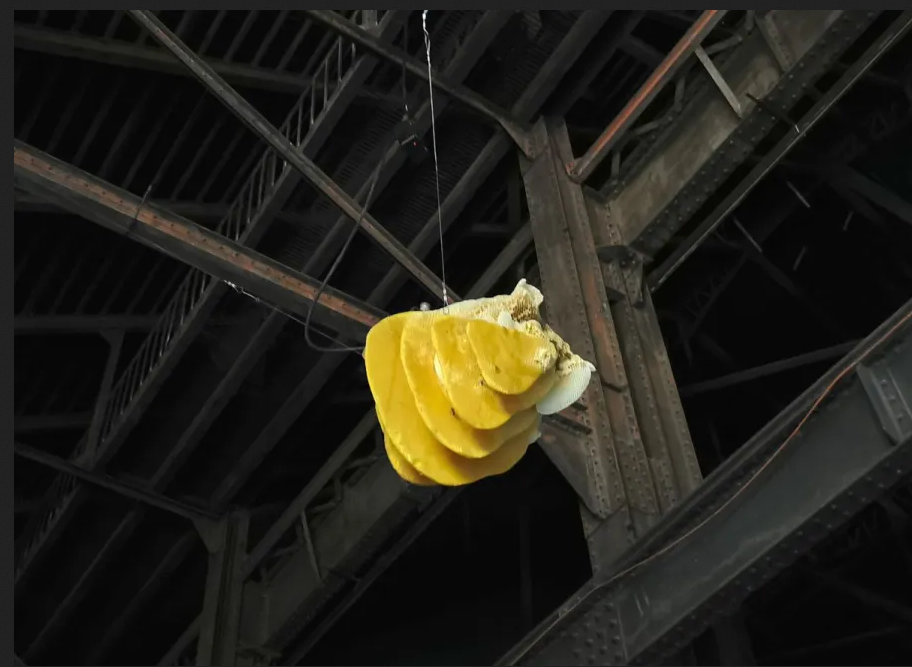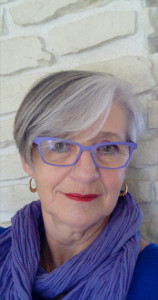
The 5 senses of art according to Pierre Huyghe

About the exhibition Afuer Uumwelt - Gande Halle of the LUMA Foundation in Arles
Until 31 October 2021
The words with which Emanuele Coccia describes Pierre Huyghe's latest master installation take us into another dimension. In reference to the projected images, he speaks of five laboratories drawing "five cosmogonies which, rather than being presented in the ordered form of a treatise, unfold the five parallel lives of the cosmos or, to put it better, its five simultaneous streams of consciousness. This is clearly not the same playground as Koons' Balloon Dogs.
The exhibition gives pride of place to images whose treatment, although realistic, prevents the identification of the referent in the Jakobsonian sense of the term. Decoding. What's that thing? I've never seen anything like it. It doesn't look like anything. The meaning of these strange visuals is therefore exclusively composed of connotations. We are in evocation and not representation. Dive into the unknown to find something new, said Baudelaire. But these connotations, which are necessarily personal to each and every one of us, are in no way the end of the quest for the work's overall meaning. On the contrary. Nothing is set in stone. Everything is in question, in suspense. And one feels that one will not get away with a symbolic reading grid. Nor with an emotional sugar-coating. That would be beside the point. We can feel that we are in the thick of things, in the concrete.

The indeterminacy of this unnameable reality, whose ghostly silhouettes dance a waltz of infinite metamorphoses, is disturbing. No wonder, since Huyghe does not hesitate to use recordings of mental images made with the help of functional magnetic resonance imaging scanners. However, fans of transhumanism should not be too quick to rejoice. The artist's aim is not to extend the storytelling of AI and enrich its mythology through a committed artistic contribution under their banner. The idea here is not to give the computer the task of eliminating all chance in the management of meaning. We do not want to control the processes. We do not give in to the chimera of governing thought, forced as it would be to submit to a structurally superior logic.
If there is mimesis in this iconography of the third type, it is in the counterfeit of human thought that it also produces, but to better heckle it, to put it in friction with its surroundings. The aim of this semiotic device is to make the "perceptive continuity of all the elements present" the work itself. Space thus becomes the "result of this diffuse perception that animates the smallest portion of matter".
Huyghe's project is thus to disconnect thought from its function of representing the world. In such an aesthetic, fixed forms and concepts are shattered. Thought becomes pure aptitude to follow in their incessant movement, non-meaningful forms which thus constitute each one a simple indeterminate transition between the other links of the chain which frame it. We are, essentially, faced with a fan of Raymond Roussel and his legendary Locus Solus. A surrealist alien compared to Zola, because he is capable of putting on a theatre stage "rails made of calf's hair". You can see the kinship with Huyghe.
It is therefore not surprising that Pierre Huyghe can quite easily pass for politically incorrect. The exhibition ventures to mix conscious machines, living animals and artefacts. To conclude by extolling the benefits of art's immersion in nature? Not really. For Pierre Hughes, life has little to do with what we call nature. But the matter is by no means Manichean. In Huyghe's art, any definition from a single point of view would be reductive. Thought does not intend to function in mono but in polysemy. All the signs of this visual language generate echoes. And these words each have five meanings.
Illustration: Affter Uumwelt 2021





































































